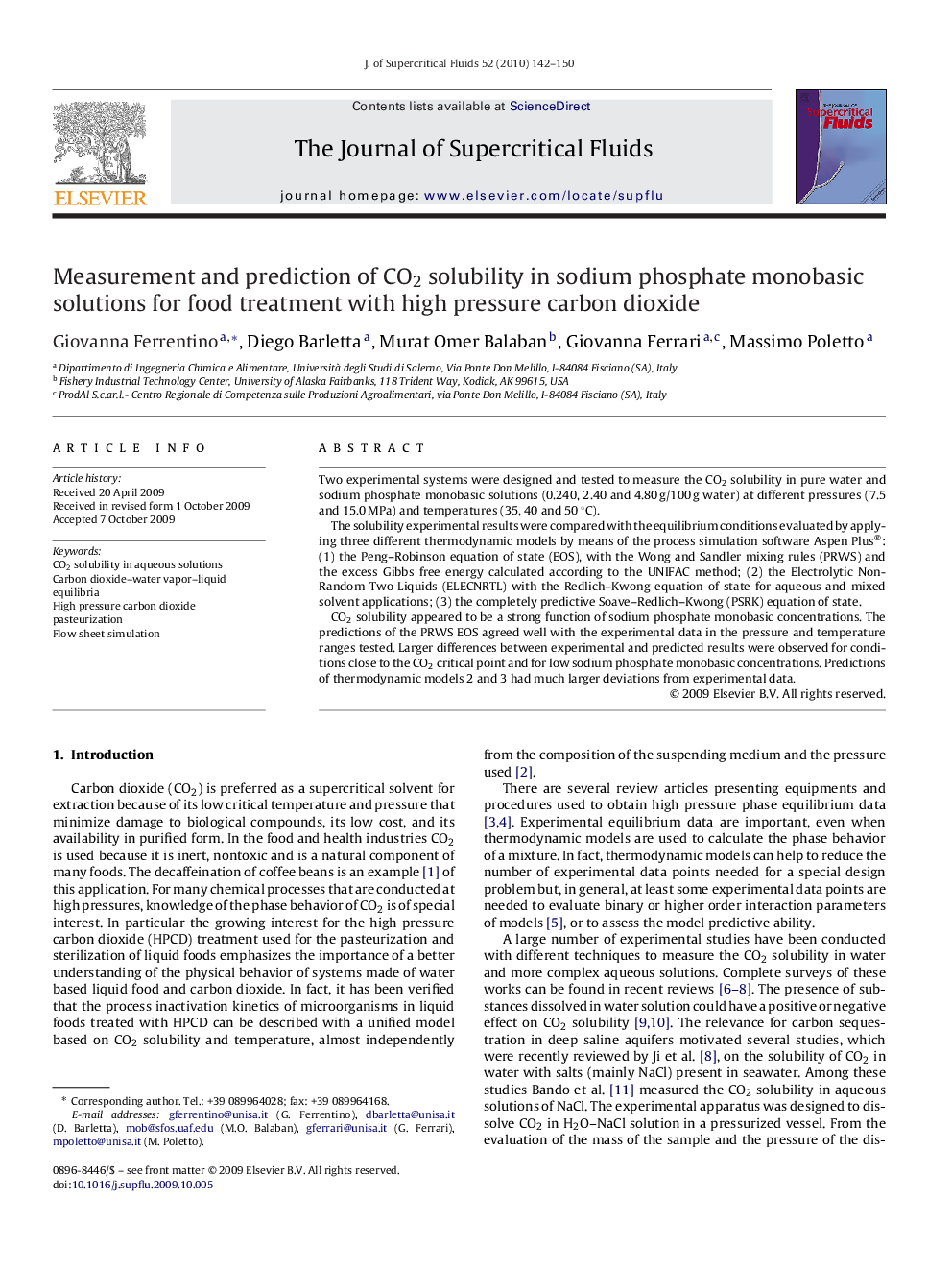| Article ID | Journal | Published Year | Pages | File Type |
|---|---|---|---|---|
| 231509 | The Journal of Supercritical Fluids | 2010 | 9 Pages |
Two experimental systems were designed and tested to measure the CO2 solubility in pure water and sodium phosphate monobasic solutions (0.240, 2.40 and 4.80 g/100 g water) at different pressures (7.5 and 15.0 MPa) and temperatures (35, 40 and 50 °C).The solubility experimental results were compared with the equilibrium conditions evaluated by applying three different thermodynamic models by means of the process simulation software Aspen Plus®: (1) the Peng–Robinson equation of state (EOS), with the Wong and Sandler mixing rules (PRWS) and the excess Gibbs free energy calculated according to the UNIFAC method; (2) the Electrolytic Non-Random Two Liquids (ELECNRTL) with the Redlich–Kwong equation of state for aqueous and mixed solvent applications; (3) the completely predictive Soave–Redlich–Kwong (PSRK) equation of state.CO2 solubility appeared to be a strong function of sodium phosphate monobasic concentrations. The predictions of the PRWS EOS agreed well with the experimental data in the pressure and temperature ranges tested. Larger differences between experimental and predicted results were observed for conditions close to the CO2 critical point and for low sodium phosphate monobasic concentrations. Predictions of thermodynamic models 2 and 3 had much larger deviations from experimental data.
Graphical abstractFigure optionsDownload full-size imageDownload as PowerPoint slide
